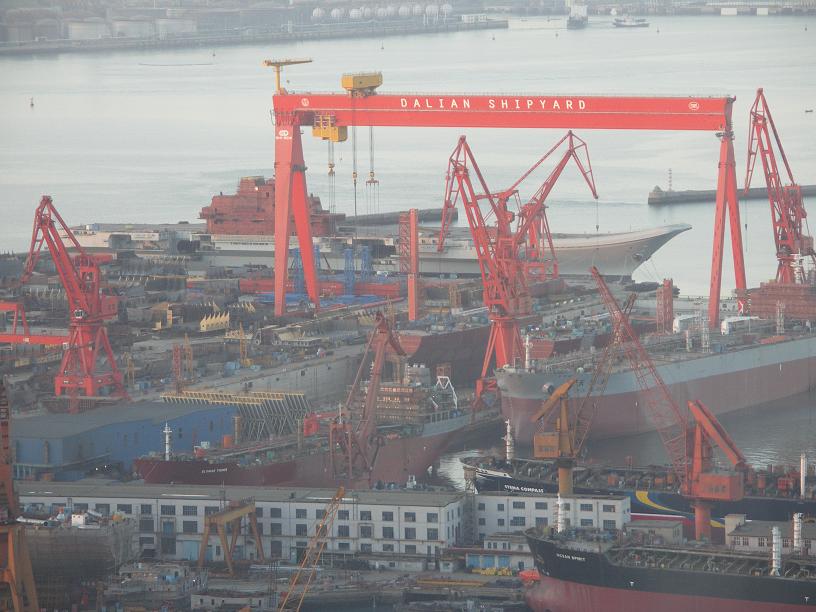The PLAN seeks to push its maritime defense perimeter further seaward. This change in operations
will require newer, more modern warships and submarines capable of operating out to the Ryukyu Islands and into the South China Sea. At these extended ranges, the platforms will have to be better armed to enable defense from all methods of attack. The Navy has been conducting research and acquiring foreign technology in an effort to improve the broad range of naval warfare capabilities; it also is acquiring new classes of ships that will be better suited for operations out to the limits of the East and South China Seas.
The Navy is working to build itself into a modern maritime force of operation consisting of combined arms with both nuclear and conventional means of operations. Taking informationization as the goal and strategic focus in its modernization drive, the Navy gives high priority to the development of maritime information systems, and
new-generation weaponry and equipment.
China is also modernizing its force of surface warships. The current fleet of approximately two dozen relatively modern guided missile-equipped frigates and destroyers are all powered by modern engineering plants and are equipped with potent surface-to-surface cruise missiles.
This force remains significantly limited, however, in the crucial areas of anti-submarine (ASW) and anti-air (AAW) warfare. It is only since the 2004 commissioning of three new classes of destroyers—the Luyang I, the Luyang II and the Luzhou—that the PLAN seems to have deployed ships capable of “area AAW”. This important capability enables a single ship to provide anti-aircraft defense not just for itself, but also for a formation of ships. This capability is crucial to fleet operations at sea, whether against a U.S. naval task force or for escorting an amphibious task force against Taiwan.. ..In the maritime arena, the 2004 White Paper reiterated the navy’s responsibility “for safeguarding China's maritime security and maintaining the sovereignty of its territorial seas along with its maritime rights and interests.” It went on to emphasize the importance of
conducting operations well offshore, timely “preparation for [the] maritime battlefield,” enhanced “integrated combat capabilities” and
the ability to conduct “nuclear counter-attacks.” It further charged the PLAN with the importance of “building maritime combat forces, especially amphibious combat forces…[and]
updating its weaponry and equipment,” to include “long-range precision strike capability…joint exercises…and integrated maritime support capabilities”.
China’s modernizing navy is already capable of carrying out many missions in defense of maritime security interests, including those involved in Taiwan’s status. While it certainly poses a thought-provoking challenge to possible U.S. naval intervention in such a scenario,
the PLAN is not yet able to pose a significant threat to open-ocean naval operations by the U.S., Japanese or Indian navies, either in the East China Sea or over the long SLOCs that run from the Indian Ocean to the Middle East. Hence, China’s maritime strategy is very much a work in progress, with its most likely direction to be an expanded view of post-Taiwan missions involving the high seas of the Pacific and Indian Oceans.
Weapons do not determine doctrine, but they do signify priorities in Chinese doctrinal thinking. Notable among the recently obtained weapons for the PLA are the heavy missile destroyers (the 2-4 Sovremenny-class DDGs) and advanced diesel submarines (the 4-12 Kilo-class SSKs), both imported from Russia. Both of these are systems that seem
designed to penetrate the defenses of carrier battle groups that the Aegis missile defense platforms provide (Arleigh Burke-class DDGs and Ticonderoga-class CGs). Similar points might be made regarding the SU-30 fighters (long range strike fighters aimed to hold at risk American carrier-based air assets) and the substantial modernization (including accuracy improvements) and build up of ballistic missiles (e.g., hundreds of M-9/11 missiles that can be used to threaten Taiwan; MaRV systems aimed to defeat American NMD systems; etc.)
All of these systems would be used in a relatively tactically offensive manner, attacking what are perceived to be key centers of gravity for America (and in some cases Taiwan). In most cases, the use of such systems would have to be conceived of in coercive terms:
the threat of their existence will lead to their utility in deterring U.S. involvement.





